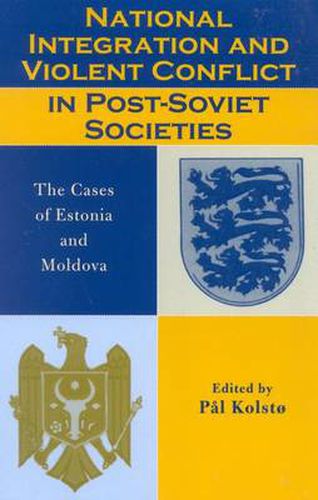Readings Newsletter
Become a Readings Member to make your shopping experience even easier.
Sign in or sign up for free!
You’re not far away from qualifying for FREE standard shipping within Australia
You’ve qualified for FREE standard shipping within Australia
The cart is loading…






Why has social peace been preserved in some new, nationalizing countries in Eastern Europe and broken down in others? While civil peace has reigned in Estonia, Moldova experienced a bloody civil war in 1992, claiming more than a thousand casualties. These two states in question share a number of common characteristics, but there is one important difference. This work analyzes processes of nation-building and ethnic integration in Estonia and Moldova in order to increase our general understanding of how social peace remains strong in one place and disintegrates in another. Chapters employ both on the ground empirical studies and a strong theoretical framework to discuss theories on ethnic violence in the modern world and their possible relevance for these two cases. Additionally, the results of two large-scale surveys and four country chapters written by scholars living and working in Moldova and Estonia round out the volume’s exploration of each country’s similarities and differences. The resulting work seeks to contribute to a better understanding of a national integration process in Estonia and Moldova and of national integration and communal violence in general.
$9.00 standard shipping within Australia
FREE standard shipping within Australia for orders over $100.00
Express & International shipping calculated at checkout
Why has social peace been preserved in some new, nationalizing countries in Eastern Europe and broken down in others? While civil peace has reigned in Estonia, Moldova experienced a bloody civil war in 1992, claiming more than a thousand casualties. These two states in question share a number of common characteristics, but there is one important difference. This work analyzes processes of nation-building and ethnic integration in Estonia and Moldova in order to increase our general understanding of how social peace remains strong in one place and disintegrates in another. Chapters employ both on the ground empirical studies and a strong theoretical framework to discuss theories on ethnic violence in the modern world and their possible relevance for these two cases. Additionally, the results of two large-scale surveys and four country chapters written by scholars living and working in Moldova and Estonia round out the volume’s exploration of each country’s similarities and differences. The resulting work seeks to contribute to a better understanding of a national integration process in Estonia and Moldova and of national integration and communal violence in general.